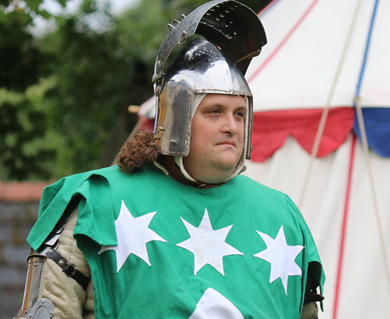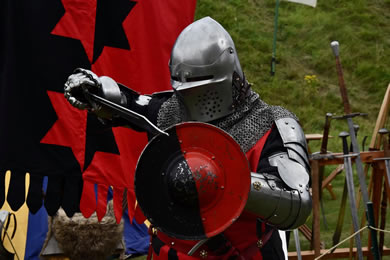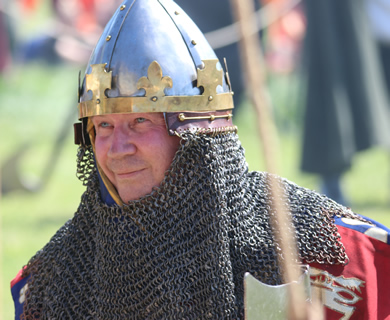Costumes
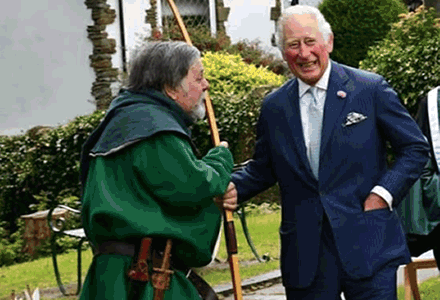
The fourteenth century is when fashion began to turn towards more closely fitted designs. It was, in effect, the beginnings of tailoring where curved seams replaced the earlier straight seams so that clothing was able to more closely fit the human form. This was enhanced by the use of lacing and buttons which also allowed a more snug fit.
For men, their clothing primarily consisted of braies, shirt, doublet, hose and cotehardie.
The braies – the equivalent of medieval underwear – made of linen and held up by a belt. The shirt – also made of linen and also considered part of the underclothing. The doublet – the equivalent of a medieval jacket and a shortened development of the previously floor length houppelande. The hose – akin to leggings or tights – these would be made of wool, often brightly coloured and occasionally with leather soles The cotehardie – an outer garment akin to a coat worn over the shirt or doublet and of varying length. Cloaks were also available for extra layers and warmth.
|
|
The most common headwear options for men were the chaperon – a padded head roll with a bag attached (for the wealthy), the bycocket (think Robin Hood), the coif (a plain linen covering) or the hood. Belts were also essential for holding up undergarments as well as pouches, purses and daggers. Footwear for both men and women would be made of leather with a long point becoming increasingly fashionable and ‘pattens’ or platforms available to increase the height or keep out of mud.
Female fashion consisted of 3 key elements – underwear, outerwear and headwear.
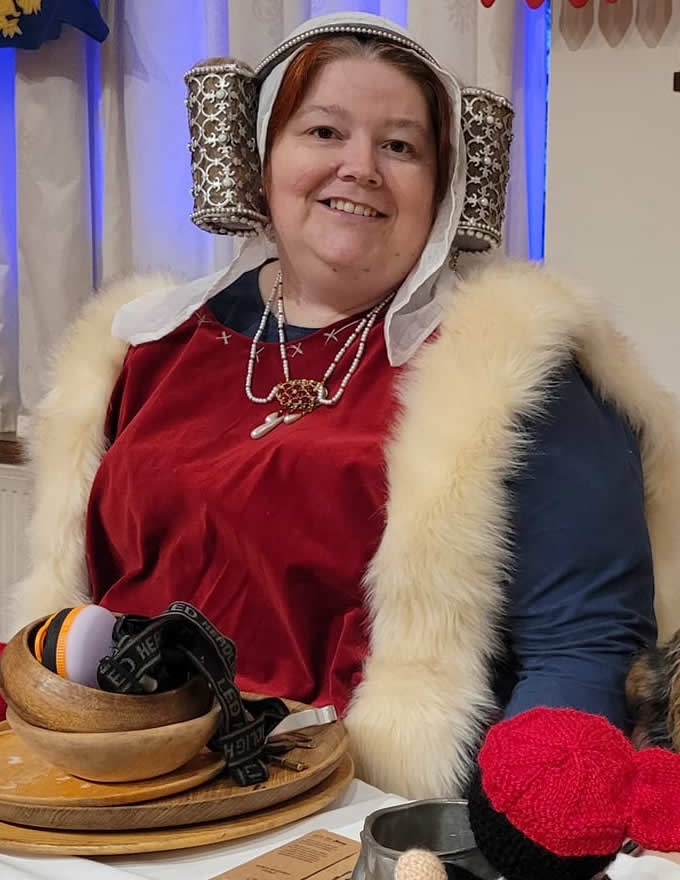 |
Underwear - a linen (or woollen) chemise or smock - loose or tight fitting and there is occasional reference to a “breast girdle” – possibly a precursor of the bra. Hose or stockings would also be worn but would only reach to the knee requiring the use of garters. Outerwear – a fitted floor length gown called a kirtle - over which would be the overgown – this might have open sleeves, voluminous sleeves or no sleeves. Women would also have the use of cloaks and wear a belt which for the rich would often be highly decorated. Headwear - this came in many shapes and styles ranging from straw hats and hoods to elaborate (and often gravity-defying) headdresses such as the henin (often depicted pointed), padded headrolls, cauls or crispinettes (think Princess Leia) and templars (2 cylinders either side of the head). Alternatively there was the coronet either or gold or even just flowers. These could all be worn over a crespine (or hairnet) and covered with a veil. |
Armour too was affected by fashion and during this time transitioned from predominantly maille pieces to plates designed to protect key areas and by the end of the century the full suit of armour had been developed. This variation and the development of various pieces gives us relatively free reign to present a wide variety of styles and designs during our shows and we always welcome questions about our attire.
